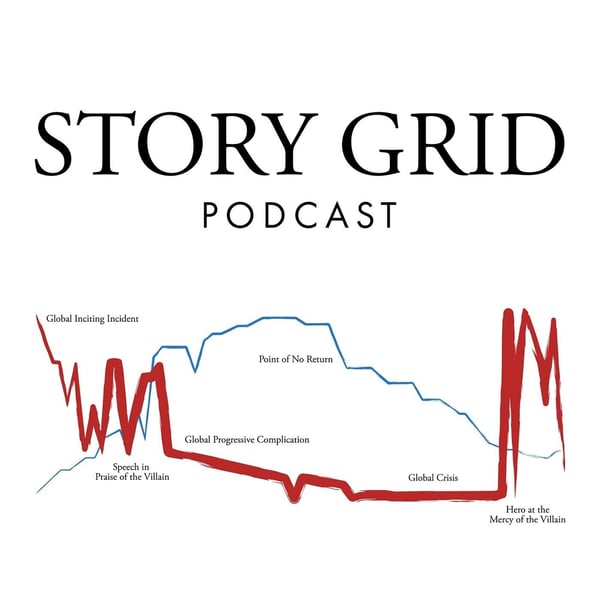Truth in Fiction: How to Write and Develop Believable Characters
Story Grid Writing Podcast
Shawn Coyne
4.8 • 767 Ratings
🗓️ 1 September 2022
⏱️ 73 minutes
🧾️ Download transcript
Summary
Transcript
Click on a timestamp to play from that location
| 0:00.0 | Hello and welcome to the Storygrid podcast. My name is Tim Graal. I'm the CEO of Storygrid, |
| 0:06.1 | and I'm also a struggling writer trying to figure out how to tell a story that works. I'm the host of |
| 0:12.4 | the show. Joining me shortly is Sean Coyne. He's the creator and founder of StoryGrid, and he's a writer |
| 0:18.4 | and editor with over 30 years of experience. Along with him is Leslie |
| 0:22.8 | Watts, editor-in-chief of Storygrid Publishing and Daniel Kiyoski, the chief academic officer |
| 0:28.5 | of Story Grid University. So last week, I was given the homework to continue working on my draft |
| 0:35.4 | based on the short story eyewitness by Ed McBain. |
| 0:40.2 | So we've been working on this for a while now. |
| 0:42.6 | And we rejiggered the way that we're doing this to try to make it much easier for me to |
| 0:47.7 | understand what they're asking me to do and get really, really specific with the next steps. |
| 0:53.6 | So I was given the homework of working on the |
| 0:56.6 | narrator, on Watson and the character. So I was given the homework of focusing on the narrator, |
| 1:02.7 | the character Watson in my short story, and really nailing him and getting him right. So I get |
| 1:08.4 | the feedback on that, and then we move on to looking at the protagonist. |
| 1:13.0 | And what I like about this is a lot of what we talk about is what it means to tell the truth |
| 1:18.1 | and a story and how telling the truth in the correct way can make your protagonists, make your |
| 1:23.9 | characters believable and how this can change based on your character and the point |
| 1:29.7 | of view and the narrator and all of these things and how they all work together. Now I'm writing fiction, |
| 1:35.1 | so what is the truth, right? And it's really interesting to dive into this question and think about |
| 1:41.8 | this question and how this applies to how the reader is going |
| 1:45.5 | to experience our characters. So it's a really important episode. I think you're going to enjoy it. |
| 1:50.7 | So let's jump in and get started. So Tim, last week we asked you to go back through your draft, |
... |
Please login to see the full transcript.
Disclaimer: The podcast and artwork embedded on this page are from Shawn Coyne, and are the property of its owner and not affiliated with or endorsed by Tapesearch.
Generated transcripts are the property of Shawn Coyne and are distributed freely under the Fair Use doctrine. Transcripts generated by Tapesearch are not guaranteed to be accurate.
Copyright © Tapesearch 2025.

